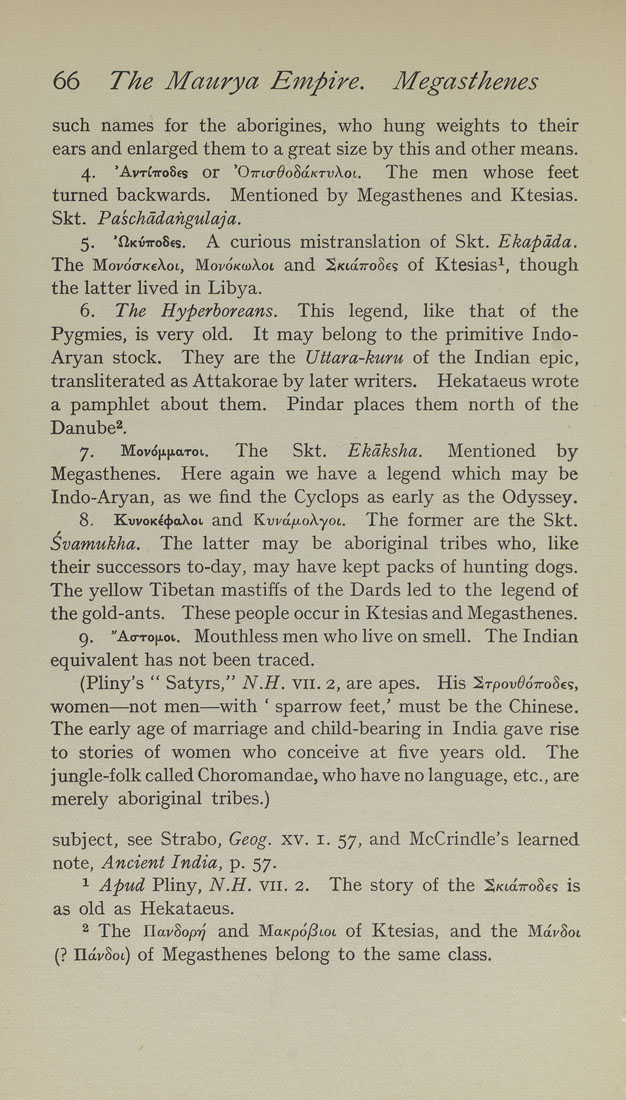66 The Maurya Empire. Megasthenes
such names for the aborigines, who hung weights to their
ears and enlarged them to a great size by this and other means.
4, *AvTi'iro8€s or 'OTTtcr^oSa/cT-uXoi. The men whose feet
turned backwards. Mentioned by Megasthenes and Ktesias,
Skt. Pa'schddangulaja.
5. 'ilKviroSes. A curious mistranslation of Skt, Ekapdda.
The Movdo-KeXoi, MovoKcaXoi. and ^KtaTToSes of Ktesias^, though
the latter lived in Libya.
6, The Hyperboreans. This legend, like that of the
Pygmies, is very old. It may belong to the primitive Indo-
Aryan stock. They are the Uttara-kuru of the Indian epic,
transliterated as Attakorae by later writers. Hekataeus wrote
a pamphlet about them. Pindar places them north of the
Danube^.
7, Movoixfj-ttToi, The Skt, Ekdksha. Mentioned by
Megasthenes. Here again we have a legend which may be
Indo-Aryan, as we find the Cyclops as early as the Odyssey.
8. KvvoK€<j>aXoi and Kwd^iokyoi. The former are the Skt,
Svamukha. The latter may be aboriginal tribes who, like
their successors to-day, may have kept packs of hunting dogs.
The yellow Tibetan mastiffs of the Dards led to the legend of
the gold-ants. These people occur in Ktesias and Megasthenes.
9. "AcTTop-oi. Mouthless men who live on smell. The Indian
equivalent has not been traced.
(Pliny's " Satyrs," N.H. vii. 2, are apes. His Srpou^oTroSes,
women—not men—with ' sparrow feet,' must be the Chinese.
The early age of marriage and child-bearing in India gave rise
to stories of women who conceive at five years old. The
jungle-folk called Choromandae, who have no language, etc., are
merely aboriginal tribes.)
subject, see Strabo, Geog. xv. i. 57, and McCrindle's learned
note, Ancient India, p. 57.
1 Apud PHny, N.H. vii. 2, The story of the ^KtaTroSes is
as old as Hekataeus,
2 The liavhopiQ and MaKpofSioi of Ktesias, and the MavSot
(? IlavSot) of Megasthenes belong to the same class.
|








